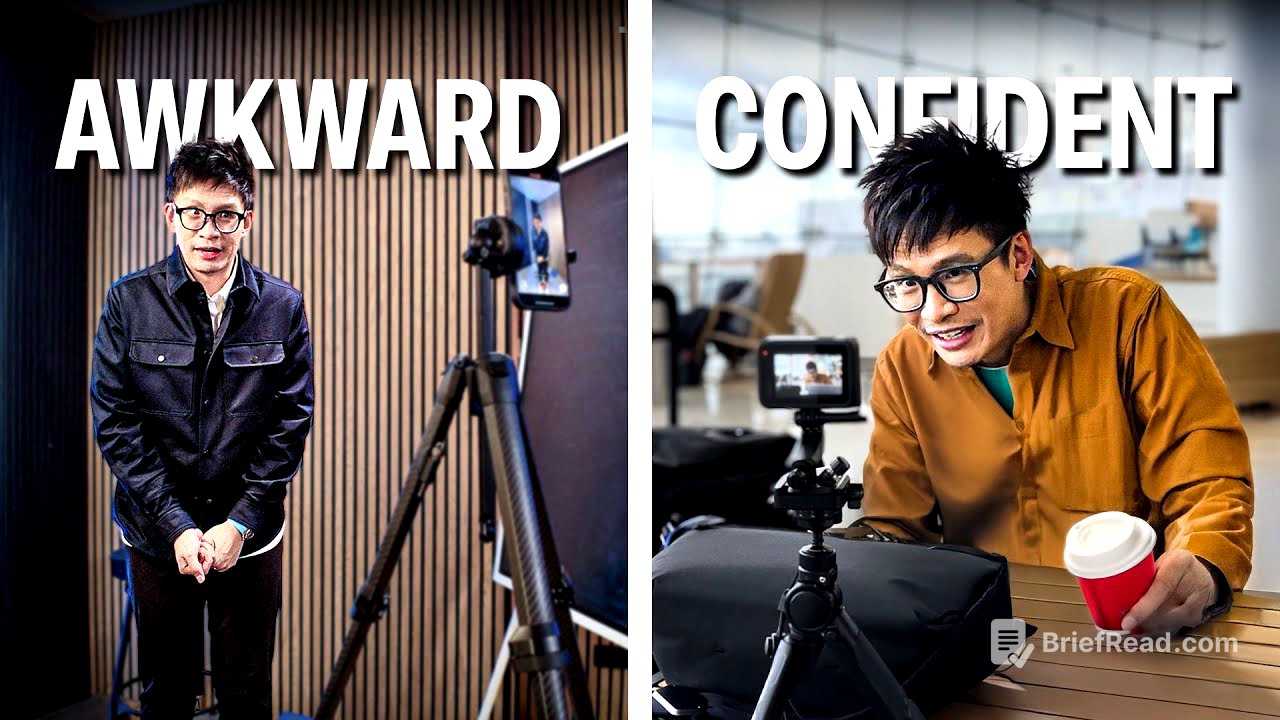TLDR;
This video provides practical advice on improving on-camera communication skills. It emphasizes that being natural on camera is a learned skill that requires dedicated practice and a strategic approach. The core method involves recording oneself, reviewing the footage, and identifying specific areas for improvement. The video also highlights the importance of applying knowledge rather than just consuming it, encouraging viewers to commit to regular practice and offering a free workbook to guide the review process.
- On-camera communication is a learned skill, not an innate talent.
- Consistent recording and reviewing of videos is crucial for improvement.
- Focus on applying knowledge and making incremental improvements each week.
- A free workbook is available to guide the record and review process.
Introduction: The Illusion of Natural Communication [0:00]
The video addresses the common misconception that communicating effectively on camera should be easy. Many people assume that because they can talk, they should naturally be good at presenting on video, influenced by watching skilled YouTubers and communicators. However, the reality is that on-camera communication is a relatively new skill that requires practice to overcome the awkwardness and self-consciousness that many experience when first starting out.
The Internal Battle: Mindset Challenges [0:49]
The speaker explains that one of the biggest challenges in improving on-camera communication is the internal critic. Your brain often works against you, making you feel like you're being unnatural or overdoing it. Overcoming these mindset challenges is a crucial part of the practice process, alongside developing delivery skills and understanding that this is a skill that needs to be learned.
Practicing Communication Skills: A Practical Approach [1:11]
The video draws an analogy between learning piano and improving communication skills. Just as a pianist needs to schedule and dedicate time to practice, so too does someone looking to improve their on-camera presence. The key is to dedicate specific time to recording videos, even if they are never published. This dedicated practice is essential for improvement.
The Record and Review Process [2:26]
The core of improving on-camera communication lies in the "record and review" process. After recording a video, the most important step is to watch it back and ask, "What's one thing I can do better next week?" This could involve improving hand gestures, varying pitch, or adjusting body language. By focusing on one specific improvement each week, progress becomes manageable and noticeable.
Before and After: A Student's Transformation [3:13]
The speaker shares a before-and-after example of a student named Austin who significantly improved his on-camera presence in just a few weeks through the record and review process. Austin identified areas for improvement, such as volume and pitch variety, and made conscious efforts to address them in subsequent recordings. He also realized that sitting made him appear lethargic, so he stood in later videos, which allowed him to use more body language and project more energy.
Free Workbook and Call to Action [4:45]
To help viewers with the record and review process, the speaker offers a free workbook that guides users on what to look for when reviewing their videos. The video concludes with a call to action, urging viewers to prioritize knowledge application over mere knowledge acquisition. The speaker encourages viewers to commit to recording one video a week, emphasizing that consistent practice will lead to significant improvement and a transformation in their on-camera presence within a few months.









